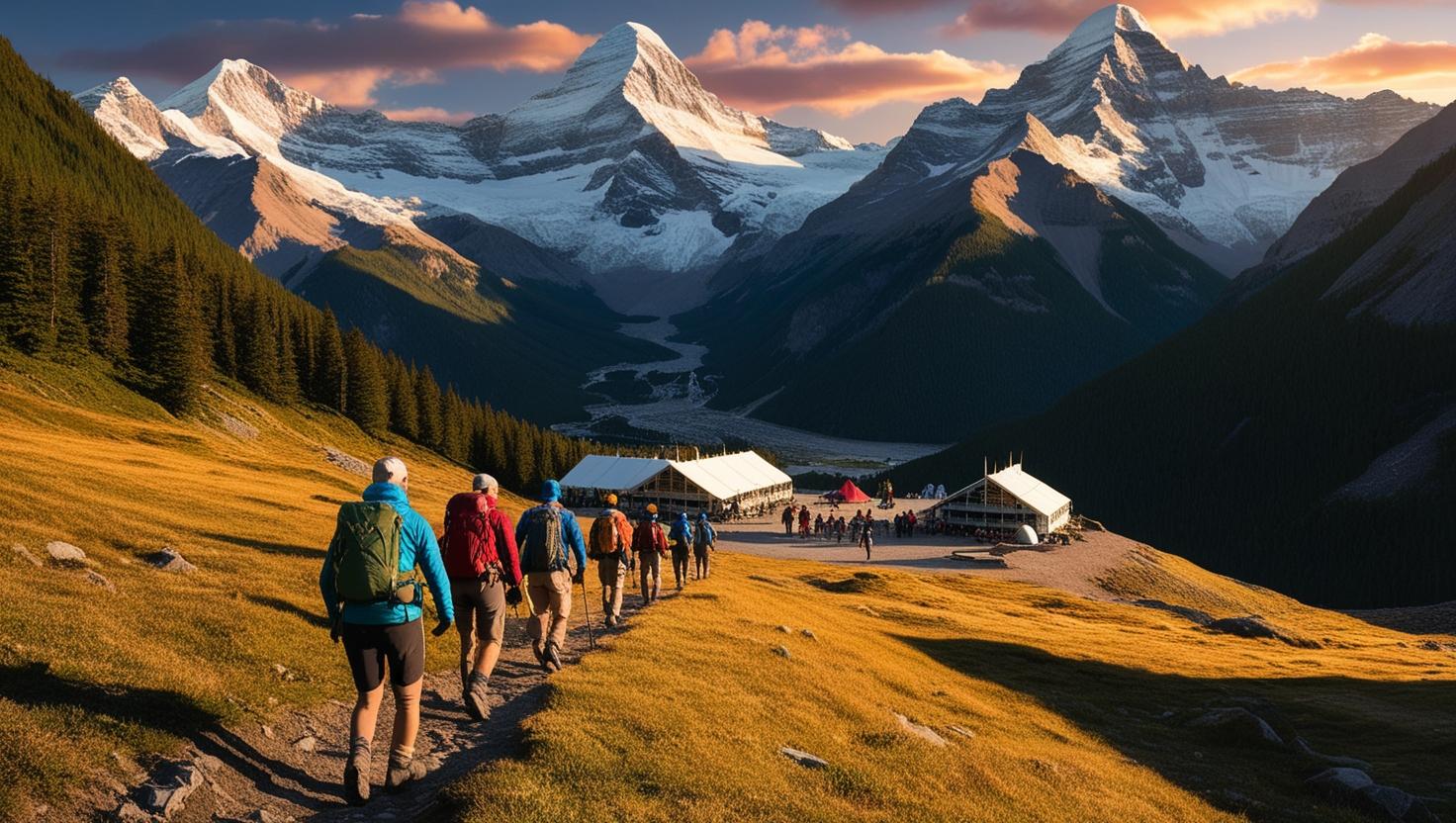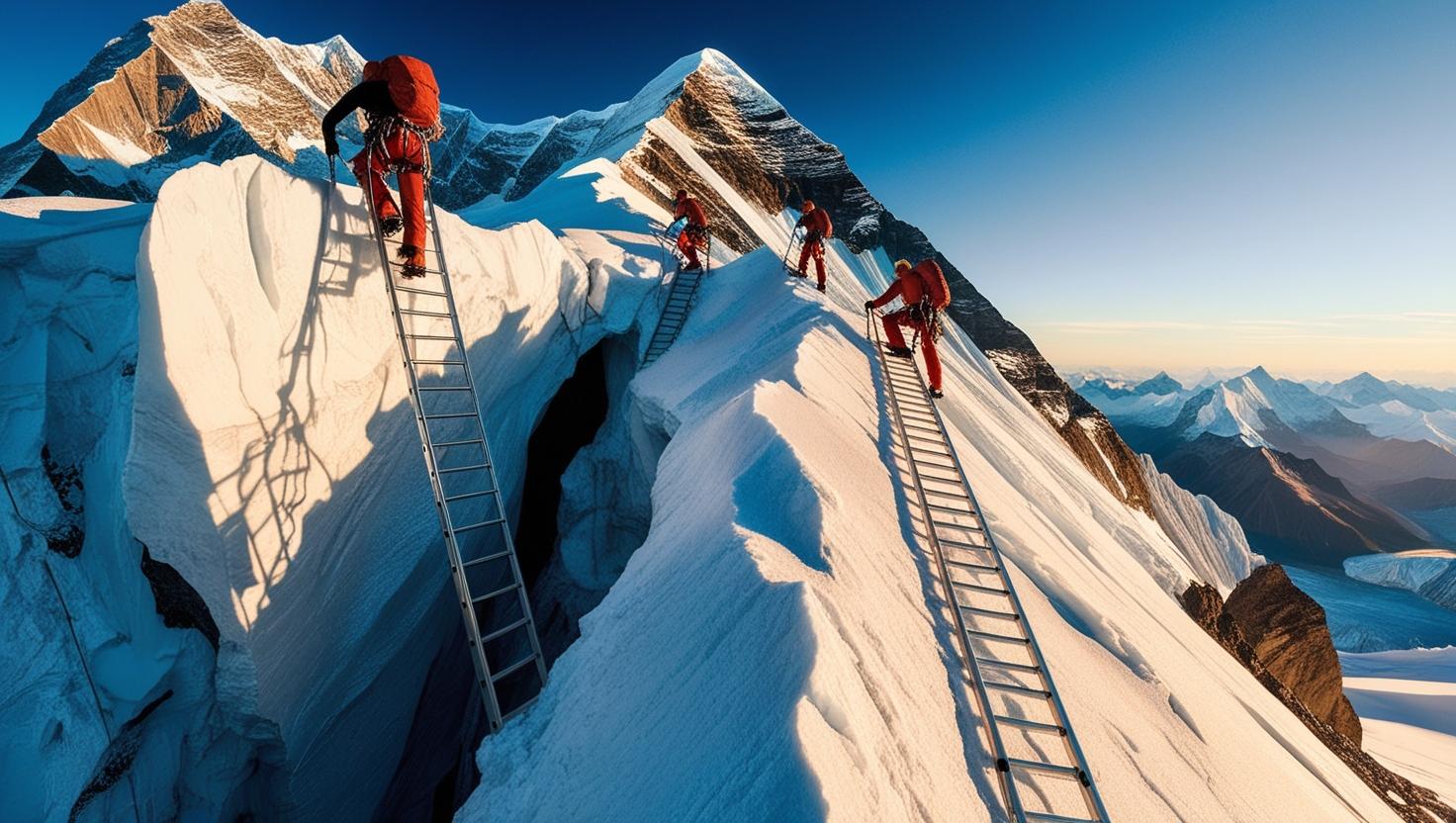
Sustainable Trekking in Nepal: Beyond the Everest Base Camp
Sustainable Trekking in Nepal: Beyond the Everest Base Camp
The thin mountain air burns in my lungs as I crest the final ridge. Before me stretches not the familiar panorama of Everest Base Camp – that overcrowded bucket-list destination – but the pristine Hongu Valley, where fewer than 500 trekkers venture each year. No teahouse villages, no Wi-Fi cafes, no helicopter tours overhead. Just vast, humbling wilderness and the occasional herder's stone hut.
The Problem with Popular Routes
Nepal's trekking industry is both its economic lifeline and an environmental challenge. The popular routes – Everest Base Camp, Annapurna Circuit, and Langtang Valley – now see tens of thousands of hikers annually. This concentration has led to predictable problems: trail erosion, waste management issues, cultural commodification, and a tourism economy that benefits some regions while leaving others behind.
On my previous trek to Everest Base Camp, I was simultaneously inspired by the majestic landscape and disheartened by the infrastructure that has developed to support mass tourism – from the endless rows of identical teahouses to the internet cafes and hot shower facilities that, while comfortable, seemed to diminish the wilderness experience I was seeking.
Finding Alternatives
This time, I wanted something different. Working with a small, locally-owned trekking company in Kathmandu, I designed a route that would take me through the less-visited eastern regions of Nepal, connecting the Makalu Base Camp trek with portions of the Great Himalaya Trail.
My guide, Pemba Sherpa, was born in the region and had watched it change over his 40 years. "When I was a boy, even the Everest route was remote," he told me as we began our journey. "Now it is like a highway in high season. But here, in these valleys, we can still trek for days and meet only local people."
The Environmental Impact
The environmental benefits of choosing lesser-known routes are significant. Popular trails now require regular maintenance due to erosion from heavy foot traffic. Waste management remains a persistent challenge, despite efforts by organizations like the Sagarmatha Pollution Control Committee.
By spreading trekker numbers across more routes, the impact on any single area is reduced. The trails we followed had natural drainage patterns intact, minimal erosion, and notably absent was the litter that mars sections of the popular routes.
We carried all our waste out with us, used water purification methods rather than buying bottled water, and cooked on small kerosene stoves rather than contributing to deforestation by burning wood – practices that should be standard but are often overlooked on established routes where convenience takes precedence.
Economic Distribution
Perhaps the most compelling reason to venture beyond the established trekking highways is economic. Tourism revenue in Nepal remains highly concentrated, with certain ethnic groups and regions benefiting disproportionately.
"In remote areas, even a small group of trekkers makes a big difference," explained Pemba. "When you buy vegetables from a farmer in these valleys, you might be providing their only cash income for a month."
We stayed in simple homestays where available, paying directly to families for accommodation and meals. In more remote sections, we camped, hiring local porters from villages along the way rather than bringing staff from Kathmandu for the entire journey.
Cultural Authenticity
The cultural experiences on lesser-traveled routes feel markedly different. In the Hongu Valley, we were invited to join a wedding celebration in a small village – not as a commercial cultural show for tourists, but as welcome guests bringing news and novelty to a remote community.
The family insisted we join them for the feast, curious about our journey and eager to share their traditions. The bride, in her early twenties, had never seen a foreigner before. Through Pemba's translation, she asked thoughtful questions about women's lives in my country, while I learned about her hopes for her future family.
This exchange felt balanced and genuine – a far cry from the sometimes performative cultural experiences available on popular routes, where traditional dances might be performed nightly for rotating groups of trekkers.
Practical Challenges
Trekking off the beaten path in Nepal isn't without challenges. Infrastructure is minimal or non-existent. Medical evacuation can be complicated. Weather forecasts may be unavailable. Food options are limited to what local communities produce or what you carry.
These challenges require more self-sufficiency and preparation, but they also offer a return to what trekking in the Himalayas was originally about – adventure, uncertainty, and genuine cultural exchange rather than a commodified tourism product.
Responsible Preparation
If you're inspired to explore Nepal's lesser-known trekking regions, responsible preparation is essential:
-
Work with ethical local companies: Choose Nepali-owned trekking agencies with transparent pricing and fair porter treatment. Ask about their environmental policies and community relationships.
-
Build in acclimatization time: Less-traveled routes often have fewer options for staging acclimatization, so a conservative itinerary is crucial for safety.
-
Develop wilderness skills: Basic navigation, first aid, and wilderness survival knowledge are more important when trekking away from established routes.
-
Pack responsibly: Bring reusable water purification, biodegradable soap, solar chargers, and enough warm layers and medical supplies to be self-sufficient.
-
Learn basic Nepali: Even simple phrases demonstrate respect and facilitate meaningful connections in areas where English is less common.
Recommended Alternative Routes
If you're considering venturing beyond Nepal's "trekking highways," consider these alternatives:
- Instead of Everest Base Camp: Try the Makalu Base Camp trek or the Upper Dolpo circuit
- Instead of Annapurna Circuit: Consider the Manaslu Circuit or Nar Phu Valley
- Instead of Langtang: Explore the Tsum Valley or Ganesh Himal Base Camp trek
Each offers comparable natural beauty with a fraction of the crowds and a more direct economic benefit to communities with fewer tourism opportunities.
The Future of Trekking in Nepal
Nepal's tourism authorities are beginning to recognize the benefits of distributing trekking tourism more evenly across the country. New trails are being developed, and permits for some lesser-known areas have become easier to obtain.
Yet there's a delicate balance to maintain. The goal isn't to simply create more "Everest Base Camps" in currently pristine regions, but to develop a more sustainable model of trekking tourism – one that minimizes environmental impact while maximizing benefits to local communities.
A Personal Reflection
On our final night in the mountains, we camped beside a high alpine lake, the massive white peak of Makalu reflected in its still waters. No other trekkers were in sight. The only sounds were the occasional call of a Himalayan snowcock and the gentle flapping of prayer flags at a small shrine beside the lake.
Pemba prepared a simple meal of dal bhat (lentils and rice), and we ate in companionable silence as the alpenglow turned the distant peaks gold, then pink, then purple.
"This is how trekking should be," Pemba said finally. "Not checking places off a list, but taking time to see, to feel, to understand the mountains and the people who live among them."
I couldn't help but agree. In choosing the path less traveled, I had found not just pristine landscapes but a more meaningful way to experience this extraordinary country – one step, one connection, one breathtaking vista at a time.
Tags
About Sofia Rodriguez
Sofia Rodriguez is an adventure travel writer and environmental advocate who specializes in sustainable outdoor experiences. With a background in environmental science and over 15 years of global trekking experience, she focuses on promoting responsible adventure travel practices.
